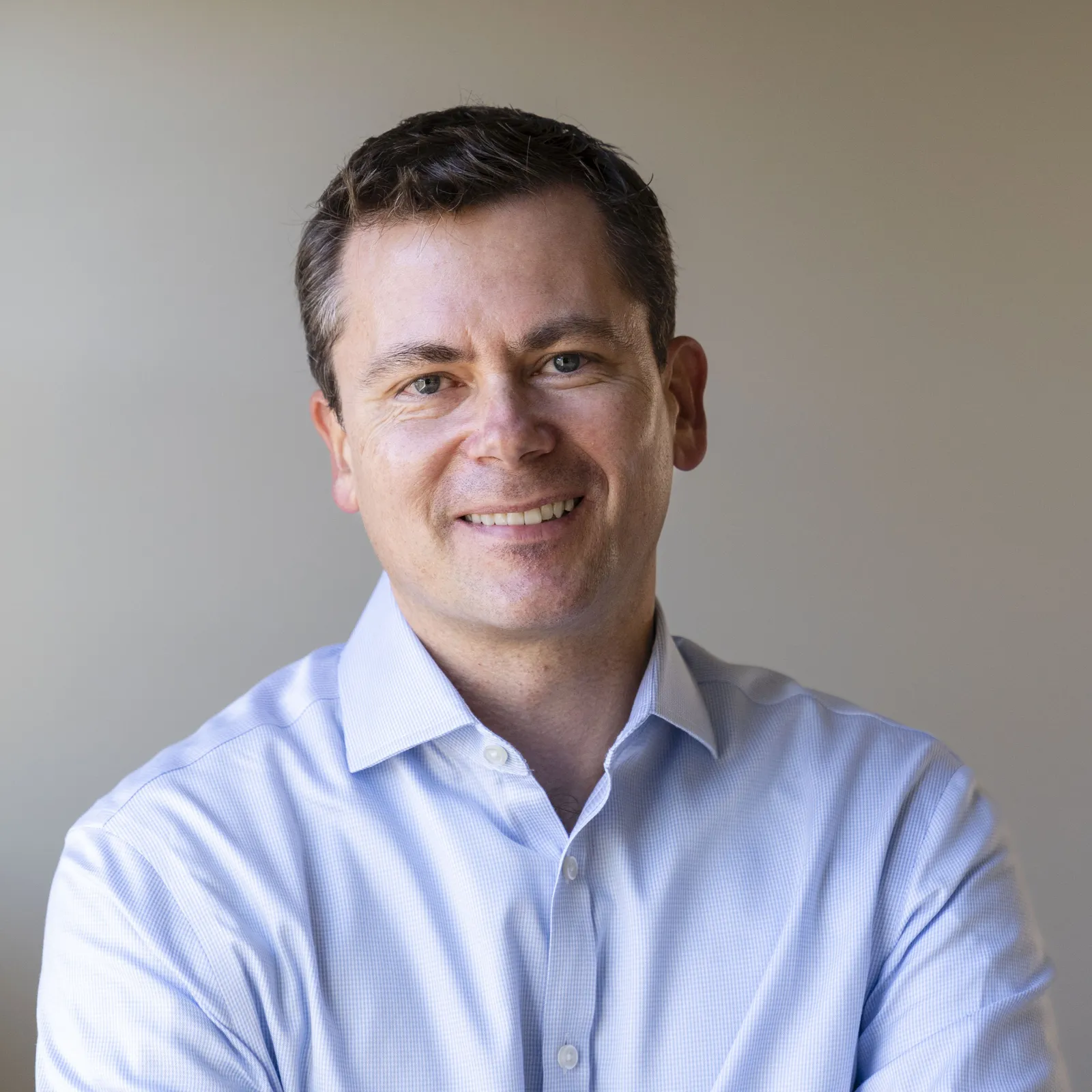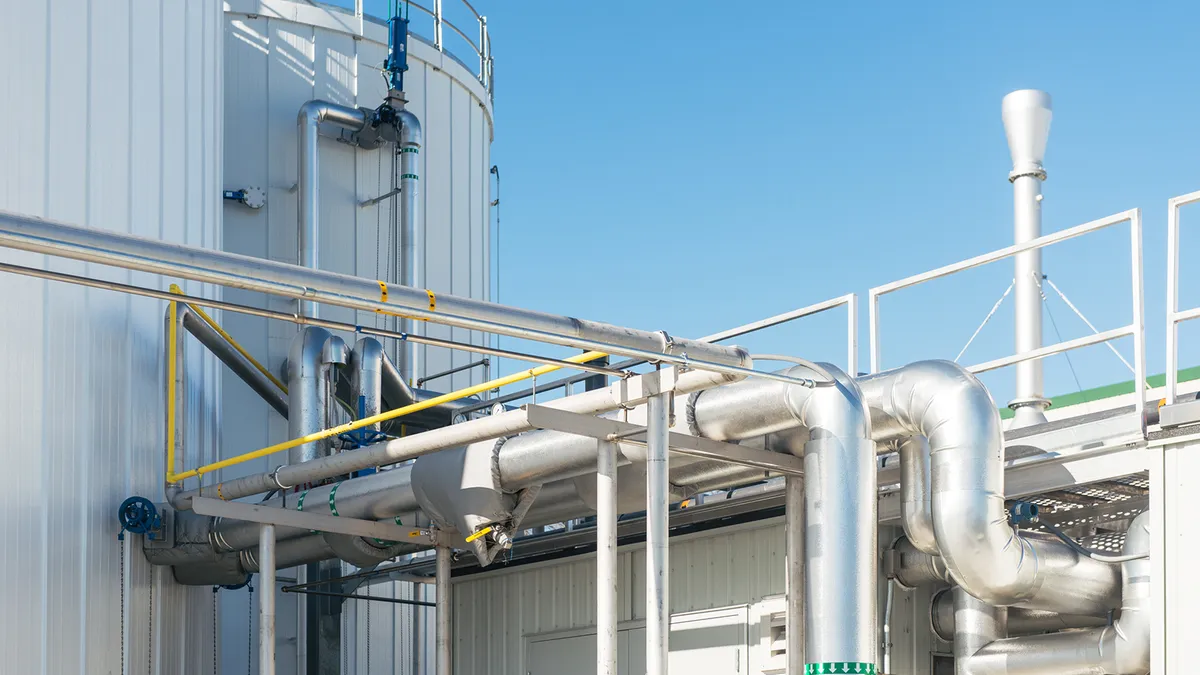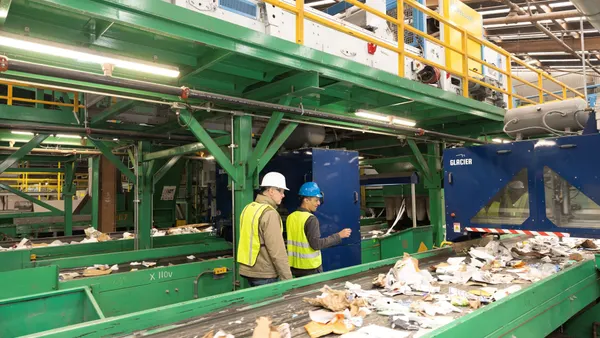Divert has ambitious plans for growth. For several years, the company has grown its customer accounts with grocers and other food processors around the country, offering food waste diversion services and data that it can sell back to customers on where they’re seeing the most waste.
A favorable regulatory environment and growing customer base has allowed the company to expand. Last year, Divert broke ground on two anaerobic digestion facilities in Turlock, California, and Longview, Washington, both of which will produce renewable natural gas from tens of thousands of tons of preconsumer organic waste.
The company has a goal to build 30 of its Integrated Diversion & Energy Facilities to be within 100 miles of 80% of the U.S. population by 2031. But it could face challenges to get there, as unreliable feedstocks in California and regulations in other states have proven challenging for other anaerobic digestion facilities.
Last year, the U.S. EPA released a pair of reports addressing organics management. One replaced the agency’s food recovery hierarchy and added nuance to the agency’s view of anaerobic digestion. The other found that organics are responsible for a sizable proportion of landfill methane.
Chris Thomas, Divert’s vice president and head of public affairs, discussed how the reports and other federal initiatives have put wind in the company’s sails. He also detailed how Divert believes its business model will help it succeed in markets where other companies haven’t.
This interview has been edited for length and clarity.

WASTE DIVE: I'm really curious to hear if the EPA’s recent reports have impacted business in any way. What opportunities are out there right now for businesses like Divert?
CHRIS THOMAS: It just totally reinforces that what we're doing is right, that we're not only incorporating EPA's most preferred pathways, which are source reduction and donation, but we're also doing standalone anaerobic digestion, which is really a key nuance in that report. It's clear that standalone digestion is the best approach to scale wasted food reduction for commercial and industrial waste generators. It scores so high on the circular assessment, it scores really high on the purity and contamination themes that they looked at, and it's also focusing squarely on wasted food only.
We're operating digesters that are focusing solely on nutrient-dense food, and you're not incorporating anything else in the digester that would compromise that. You're not mixing in green yard waste, you're not mixing in human wastewater, or animal manure or anything like that into the process. The EPA report really makes it clear that if you're dealing with homogeneous digestion from a single type of user, then it scores really high on the circularity theme.
One of the key distinctions of the updated food waste hierarchy was digestion with beneficial use of the digestate versus landfilling digestate. How are your facilities handling the digestate? I know you've got the gas offtake, but what about the solids?
That's where having our digestion facilities are so beneficial, because we're not only getting the byproduct of renewable gas out of the process, but we're also making this rich digestate, which we can then add to compost and enhance the value of compost.
If [our feedstock] went straight to compost without going through our facilities on the commercial side and on the industrial side, it would be too wet and it would have too many contaminants. You'd be at risk of basically spreading microplastics all over soil amendments and then reintroducing these contaminants into the agricultural supply chain.
We'll send [our digestate] to interested parties who want to use it or add it to their soil amendments or finished compost. I can't speak to Longview or Turlock because they're in development, but I can tell you at our facilities, the digesters we operate, we have partners in the agricultural space who are interested in taking that digestate material.
What are the contaminants you're talking about that would come from a restaurant or grocery store that you wouldn't necessarily get from that residential stream?
When you consume food and you put it in your own bin [at home], you're pretty good at removing the wrappers, the packaging. You're not gonna see a plastic fork or anything like that end up in the process. It's gonna go out your back or front door, and in my case, it's mixed in with my yard waste. When that goes to a compost facility on the residential side, it's a very small component of yard waste, the moisture content is really low and it doesn't have those kinds of contaminants. If it went to a compost facility with those kinds of contaminants, it would just be pulverized and create all sorts of challenges with these contaminants ending up in finished compost product.
When you talk to composters and haulers, they report the contamination rates are really low in those types of environments, because you have that sort of automatic separation going on.
On the commercial side, they often report that either they don't want to accept commercial food waste, or they are not able to accept commercial food waste just due to the high levels of moisture that is in food and because of those contaminants that often find their way in. You're inevitably going to have packaging in that material, or if you're dealing with a restaurant, you're trusting all the people in the restaurant to make sure that they don't throw the wrapper in that bin along with the plastic fork.
What you have in these anaerobic digestion facilities is the types of sophisticated depackaging equipment that we have, which pulls those kinds of plastics off, pulls that material, and strains all the wasted food material through the machinery and creates a liquid slurry, which is then primarily screened and secondarily screened so that you have no risk of dealing with those contaminants. You get the benefit of the energy and you get the benefit of the digestate, which then goes and enhances the circularity.
In addition to the EPA’s reports, we've had a couple other strategies and funding opportunities announced at the federal level on methane and food loss and waste reduction. What are your thoughts on those and the guidance that the administration is giving on what they want food waste generators to do? Have those also been beneficial for you and your business?
We did see that report come out and we offered comments to the EPA. What they're doing and what they're saying is on the right track and we offered some additional insights based on our own experience. But just like the EPA food reports and how they analyzed the methane risk and what are the best pathways, what are the trade offs, we wanted to be sure that the EPA continues to make sure that it's very clear to folks that there's not a one-size-fits-all approach here. If you really look at the scale, you want to make sure as a waste generator you're choosing the best solution that's suited for your own operation.
In recent months, we’ve seen issues with some high profile anaerobic digestion facilities in California and Michigan. What are your feelings on these larger anaerobic digestion facilities as a business model? Are there lessons to be taken from their financial or permitting challenges, or things that you believe you're doing differently at Divert's facilities to avoid those issues?
When we talk to solid waste managers around the country, they're telling themselves, “We have this problem. We have all kinds of commercial food waste, which is going to need to be processed.” That's either because it's organically happening on its own or because of new policy impacts and new legislative changes in all these states and cities around the country. They're asking themselves, “Okay, what kind of investment do we make? How do we know how much is going to be generated? And how does that inform our investment? And then, how do we pay for that investment? Is it increased rates?”
In many ways, we're taking that load off of them already. We're already serving so many of these large commercial waste generators in their communities, those are the 6,000 grocery stores that we're working with. They're excited by the fact that we already have the contracts in place, and that enables us to go ahead and make those large-scale investments that we know we'll be able to service from a debt standpoint, because we're already working with these thousands of customers around the country.
So is it that you have the data to know where an ideal spot for these digestion facilities would be? Is that the differentiating factor for your business model that makes it a bit easier for you to build these facilities?
Yeah, we know where it is, we know where it's going to be coming from. We have the relationships in place with large national retailers, to where we can service them at all their locations.
In some cases, we just have a contract with a grocery store in one part of the country, and they say, “Let us know when you're investing in this other region of the country, because we really feel like we need to do a better job diverting wasted food material from landfills.” They know they're gonna get the benefit of diversion and source reduction and donation from our facilities one way or another, because we give them good data on what they're wasting.
With our new investments, we also do the digestion in house. So when we expand these facilities, we have an even greater impact, and then just scale up the business more and serve more volume. We have some facilities which don't have digesters, and that enabled us to really get into the market and serve a customer where they want to be served and have a diversion service in place. Now, we have that volume, we have those contracts, and we're able to scale that.
In Michigan, digesters are facing a permitting challenge. Generally speaking, is permitting an issue for you as you look into building new facilities? Are there things that jurisdictions can do to make it easier for you to make an investment?
If you have a digester that's dealing with human wastewater or animal manure, then there are concerns about whether the biosolids can and should be used without further study of pathogen risk and all of that kind of thing. When we're introducing ourselves to the local government and the state governments who are going to regulate these facilities, I think it oftentimes gives them comfort that we're dealing only with wasted food. They know those sorts of pathogenic concerns are more than mitigated.
We've had good experiences so far through our permitting processes. We recognize that what we're doing is a novel process and that it takes time to educate regulators about what we're up to, and how what we're doing is different than a dairy digester or a digester you're gonna see at a wastewater treatment plant. Once they really understand what we're up to and know we're doing basically standalone digestion, they get comfortable with what we're doing pretty quickly.











